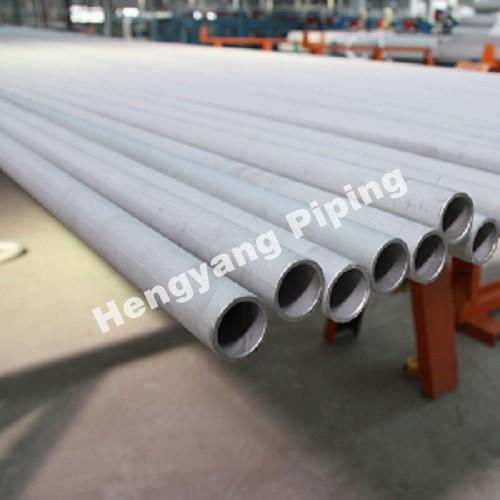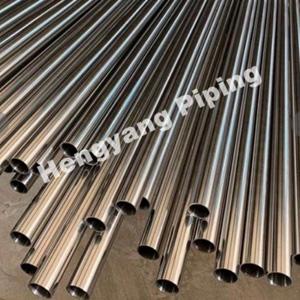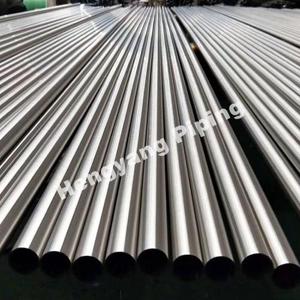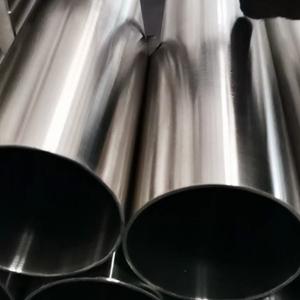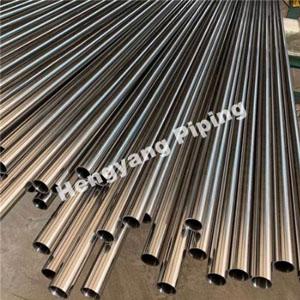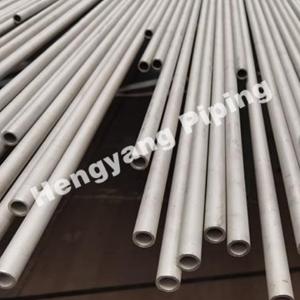The Difference Between Inconel 625 and Hastelloy C276
Inconel 625 and Hastelloy C276 are both highly corrosion-resistant nickel-based alloys, renowned for their exceptional performance in aggressive environments. Both alloys provide outstanding resistance to a broad range of corrosive media, high-temperature strength, and good fabricability, making them ideal for industries such as chemical processing, aerospace, marine engineering, and oil and gas. Although these alloys share several similarities, they also differ in composition, properties, and applications. This article will delve into the distinctions between Inconel 625 and Hastelloy C276, emphasizing their unique characteristics and the specific applications for which each is best suited.
Composition and Properties
Inconel 625 is a solid solution-strengthened nickel-chromium-molybdenum alloy with the addition of niobium and tantalum. Its typical chemical composition includes about 58% nickel, 20-23% chromium, 8-10% molybdenum, 3.15-4.15% niobium, and 0.40-0.65% iron, along with trace amounts of manganese, silicon, aluminum, titanium, and carbon. The high nickel content ensures exceptional corrosion and oxidation resistance, while the chromium and molybdenum contribute to high-temperature strength and resistance to pitting and crevice corrosion.
Hastelloy C276 is a nickel-molybdenum-chromium alloy with added tungsten. Its typical composition includes approximately 50% nickel, 15-17% chromium, 14.5-16.5% molybdenum, 3-4% iron, and 2.5% tungsten, along with small amounts of cobalt, manganese, silicon, vanadium, phosphorus, sulfur, and carbon. The high nickel and molybdenum content provides excellent resistance to a wide range of corrosive environments, while chromium and tungsten enhance its resistance to localized corrosion and stress corrosion cracking.
Both alloys are known for their superior resistance to corrosion in various environments, including both oxidizing and reducing conditions, as well as in the presence of chlorides, sulfuric acid, hydrochloric acid, and other aggressive chemicals. Additionally, they exhibit high resistance to pitting, crevice corrosion, and intergranular attack, making them ideal for harsh industrial environments.
Mechanical Properties
Inconel 625 and Hastelloy C276 both offer high-temperature strength and excellent fabricability. Inconel 625 typically has a tensile strength of 120-135 ksi (827-931 MPa) and a yield strength of 60-75 ksi (414-517 MPa) at room temperature. It maintains strong strength and ductility at elevated temperatures, making it ideal for high-temperature applications such as gas turbine components, heat exchangers, and chemical processing equipment.
Hastelloy C276, on the other hand, has a typical tensile strength of 100-110 ksi (690-760 MPa) and a yield strength of 40-50 ksi (276-345 MPa) at room temperature. It also retains excellent strength and ductility at high temperatures, with superior resistance to oxidation and carburization. These properties make Hastelloy C276 highly suitable for chemical processing, pollution control, and marine engineering applications.
Corrosion Resistance
One of the key differences between Inconel 625 and Hastelloy C276 lies in their specific corrosion resistance properties. While both alloys offer exceptional resistance to a wide range of corrosive environments, they exhibit different levels of resistance to certain types of corrosion.
Inconel 625 is highly suitable for applications involving seawater, brine solutions, and acidic environments, including sulfuric and hydrochloric acids. It offers strong resistance to both oxidizing and reducing conditions, as well as to chloride-induced stress corrosion cracking. Inconel 625 is commonly used in marine engineering, chemical processing, and aerospace applications where resistance to seawater and aggressive chemicals is essential.
Hastelloy C276 is renowned for its exceptional resistance to a wide range of corrosive media, including sulfuric acid, hydrochloric acid, phosphoric acid, acetic acid, and other acidic environments. It also provides excellent resistance to both oxidizing and reducing conditions, as well as to pitting and crevice corrosion. Hastelloy C276 is extensively used in chemical processing, pollution control, and oil and gas applications, where resistance to aggressive chemicals and high-temperature environments is crucial.
Weldability and Fabrication
Both Inconel 625 and Hastelloy C276 are highly weldable and can be fabricated using standard welding techniques, including gas tungsten arc welding (GTAW), gas metal arc welding (GMAW), shielded metal arc welding (SMAW), resistance welding, and electron beam welding. However, it is crucial to follow the proper welding procedures and use the correct filler metals to ensure weld integrity and preserve the alloys' corrosion resistance.
Inconel 625 is typically welded with matching composition filler metals, such as alloy 625 or alloy 686, to produce high-quality welds with excellent corrosion resistance. Proper preheat and post-weld heat treatment are necessary to minimize cracking risks and maintain the mechanical properties of the weld joint.
Hastelloy C276 is welded using matching composition filler metals, such as alloy C276 or alloy 622, to ensure strong welds with superior corrosion resistance. Careful control of welding procedures and heat input is essential to prevent the formation of harmful phases in the weld metal and heat-affected zone.
Applications
Inconel 625 and Hastelloy C276 are both widely used in various industrial applications due to their exceptional corrosion resistance, high-temperature strength, and good fabricability. However, each alloy is best suited for specific applications based on its unique properties and performance characteristics.
Inconel 625 is commonly used in marine engineering, chemical processing, aerospace, and nuclear power industries. Its resistance to seawater, brine solutions, and acidic environments makes it ideal for marine components such as propeller blades, shafts, and fasteners. In chemical processing, Inconel 625 is employed in equipment like heat exchangers, reactor vessels, and piping systems, where resistance to corrosive chemicals is critical. Additionally, Inconel 625 is used in aerospace and nuclear power applications for components such as turbine blades, combustion chambers, and nuclear reactor core parts due to its high-temperature strength and corrosion resistance.
Hastelloy C276, on the other hand, is widely used in chemical processing, pollution control, oil and gas, and pulp and paper industries. Its superior resistance to a wide range of corrosive media, including sulfuric acid, hydrochloric acid, and acetic acid, makes it suitable for chemical processing equipment like reactors, distillation columns, and scrubbers. In pollution control, Hastelloy C276 is used in components such as flue gas desulfurization systems, stack liners, and scrubber internals, where resistance to acidic gases and high temperatures is vital. In the oil and gas sector, it is used for downhole equipment, valves, and piping systems, where it must withstand corrosive fluids and high-temperature conditions.
In summary, Inconel 625 and Hastelloy C276 are both highly corrosion-resistant nickel-based alloys that deliver exceptional performance in aggressive environments. While they share similarities in high-temperature strength, corrosion resistance, and fabricability, they differ significantly in composition, properties, and applications. Inconel 625 is ideal for marine engineering, chemical processing, aerospace, and nuclear power applications, whereas Hastelloy C276 is commonly used in chemical processing, pollution control, oil and gas, and pulp and paper industries. Understanding the distinct characteristics of each alloy is crucial for selecting the most appropriate material for specific industrial applications, ensuring optimal performance and long-term reliability.
